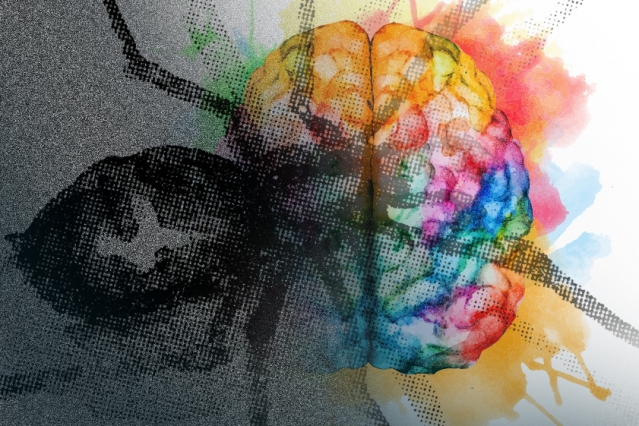Thanks to rats a person can get rid of phobias

People who are afraid to fly an airplane or are afraid of spiders, so as not to risk in the basement, can try this kind of treatment as exposure therapy. In a safe environment, people are repeatedly confronted with information such as photographs of airplanes or images of a black widow, with the help of this, their psyche is tempered, and they already react weaker to their fears in real life.
Unfortunately, the effects of therapy are not long-term and many people relapse. MIT scientists have found an opportunity to improve the long-term outcome in rats, and thus offer a way to improve therapy for people suffering from phobias and more complex disorders, such as post-traumatic stress disorder (PTSD). Continued under the cut ...
The study was conducted at the KI Goosens laboratory, the McGovern Research Institute of the Brain Research Institute, a neural circuit was detected that becomes active during exposure therapy in rats. In a study published September 27 in eLife, the authors showed that they can stretch the positive effect of therapy for two months by increasing the activity of the chain during treatment.
“If after waiting for such therapy in humans or rats, you wait a large amount of time, then you’ll see a phenomenon called spontaneous recovery, in which the initial fear returns,” explains Goosens. “This is one of the barriers to this kind of therapy. You spend time on therapy, but it gives only temporary relief. ”
According to statistics from the National Institute of Mental Health, 18 percent of the US adult population is diagnosed with fear or anxiety disorder every year.
How to get rid of fear?
The neural circuit defined by scientists connects a part of the brain involved in memorizing fears, called the basolateral tonsil (BLA), with another region called the adjacent nucleus (NAC), it participates in the reward system. Goosens and her colleagues call this the BLA-NAC scheme.
The researchers looked at the connection between fear and reward for a while, says Goosens. “The amygdala is a part of the brain that is closely related to memory of fear, and also it is associated with a reward system for learning and the nucleus accumbens, which is a key area of reward in the brain. We thought about whether this system is useful. When you wait for something bad and do not get it, the signal comes to the pleasure center, do you think this is good? ”The
researchers conducted an experiment in which they taught the rats to fear noise: after a certain sound signal, the animals received a weak electrical discharge. Then the rats were affected by this noise, but without the pain stimulus, and they monitored the activity of the brain's neurons.
Then, for 55 days, scientists influenced the rats with a “terrible” sound signal, but instead of an electric discharge, experimenters encouraged one group of rats with a treat, and another group was treated with a conventional exposure therapy (without sweets). As a result, the rats that received the reward no longer felt fear, while the rest of the rats still showed signs of panic. According to scientists, research in rats can give impetus for further study of this method of therapy in humans.
“The long lasting advantage of the chain stimulation is one of the most surprising and welcoming results of the study,” says Goosens. “The effect we saw did appear months later, we want to know what is happening in these two months. What does such a scheme do to suppress the restoration of fear over this period of time? We still do not understand what it is ... ”
Another interesting conclusion from the study is that the scheme was active both during the training of fear and its treatment, says lead researcher, Susana Correia, a researcher in the laboratory Goosens. "Understanding what
whether these subcircuits are different in this projection can provide an opportunity to develop a pharmaceutical approach to a particular type of fear and improve cognitive therapy, ”says Correia.
The immediate future of therapy
Some doctors are already using this therapy in the treatment of post-traumatic stress disorder, and Goosens suggests that their research may stimulate further study of this method in human therapy.
And although it is likely that people will not receive this therapy in the near future, Goosens says that it is useful to know exactly which schemes are involved in the disappearance of fears.
“This study provides an excellent scientific basis for the development of exposure therapy, and I hope that this clinical application can be tested on a large scale for the treatment of post-traumatic stress disorder,” says Mireya Nadal-Vicens, a researcher at Harvard Medical School and Massachusetts General Hospital, which did not participate in the study. “In addition, this method is probably more clinically effective.”
Other MIT authors, including technical assistant Anna McGrath, student Allison Lee and McGovern of the institute’s principal professor Ann Graybiel.
Source: " link to the site "
